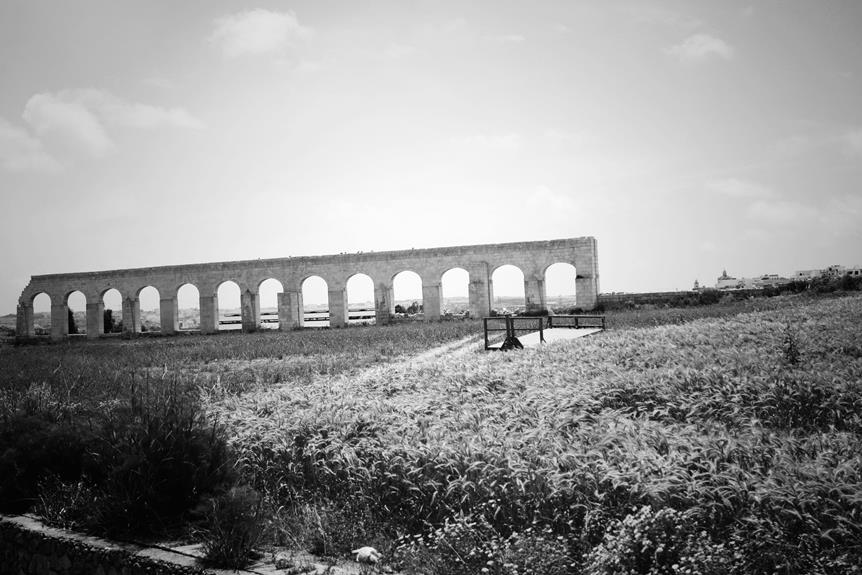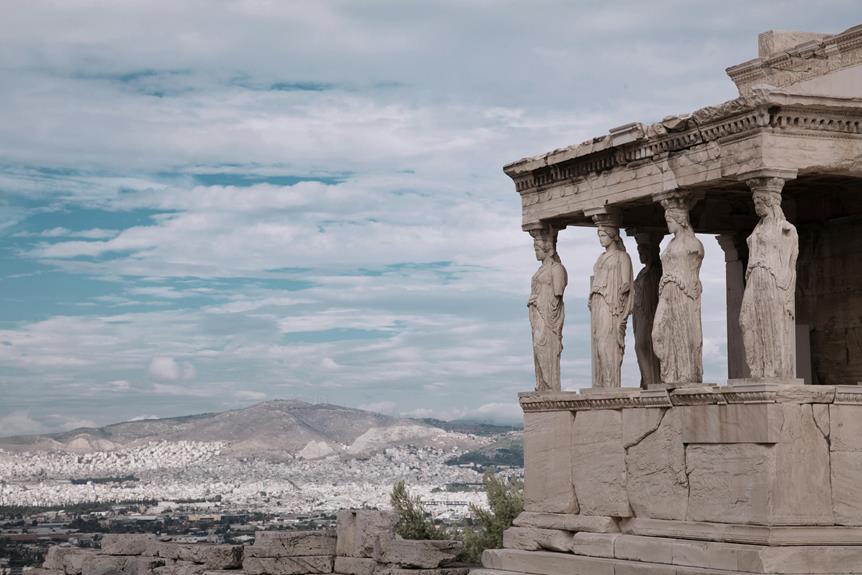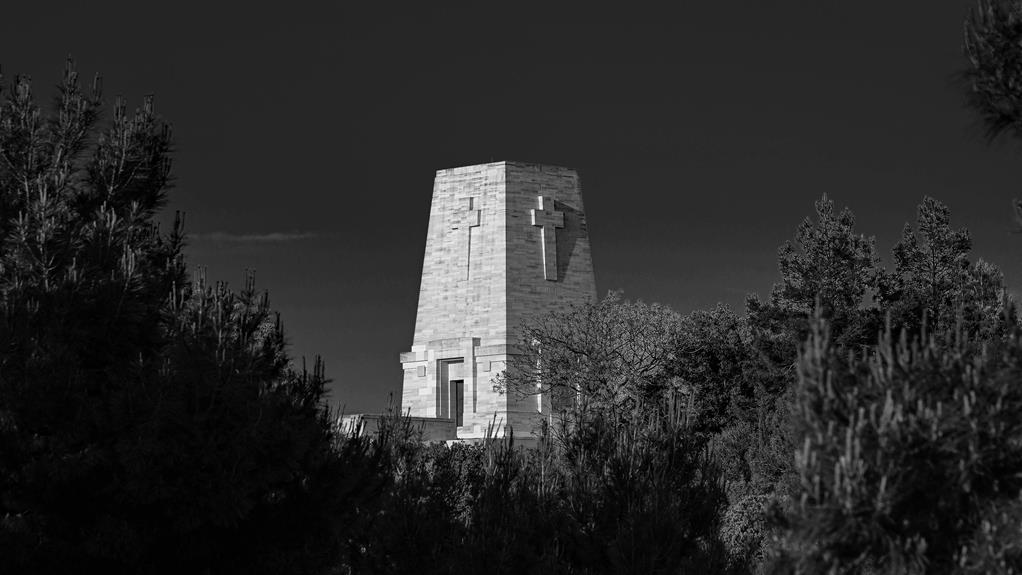Nestled in the shadow of Mount Vesuvius lies the ancient city of Pompeii, a site frozen in time by a catastrophic volcanic eruption. The haunting remnants of this once-thriving Roman settlement offer a unique opportunity to witness history preserved in ash. From its well-preserved architecture to the everyday artifacts that provide a window into daily life, Pompeii beckons visitors to explore its streets and contemplate the lives of its former inhabitants. However, beyond the visible ruins lies a deeper story waiting to be uncovered, one that sheds light on the resilience of a civilization abruptly halted by natural disaster.
Key Takeaways
- Pompeii is an ancient Roman city near Naples, Italy.
- Destroyed by Mount Vesuvius in 79 AD, buried under volcanic ash.
- Rediscovered in the 18th century, showcasing Roman architecture.
- Daily life included socializing, diverse diets, and public baths.
- Pompeii's legacy offers insights into ancient Rome, attracting scholars and tourists.
History of Pompeii
Pompeii, situated near modern-day Naples, Italy, boasts a rich history that dates back to ancient Roman times. The city was a thriving Roman settlement until it was tragically destroyed in 79 AD by the eruption of Mount Vesuvius. This catastrophic event buried Pompeii under layers of volcanic ash and pumice, preserving the city in a remarkable state and freezing it in time. The ruins of Pompeii remained hidden for centuries until their rediscovery in the 18th century, leading to significant archaeological discoveries.
The destruction of Pompeii by the volcanic eruption of Mount Vesuvius was a pivotal moment in the city's history. The sudden disaster engulfed the city, covering it with a thick layer of ash and debris, effectively sealing it off from the world. This natural catastrophe led to the preservation of Pompeii's buildings, artifacts, and even the remains of its inhabitants, providing modern archaeologists with invaluable insights into daily life in ancient Rome.
The archaeological discoveries made in Pompeii have offered a unique window into the past, allowing researchers to piece together the city's urban layout, social structure, and cultural practices. Excavations have revealed elaborate frescoes, well-preserved mosaics, public buildings, private residences, and even the remains of temples and theaters. These findings have contributed significantly to our understanding of Pompeii's history and the broader Roman civilization.
Excavation and Preservation Efforts
How have modern archaeological techniques contributed to the excavation and preservation efforts at the ancient site near Naples, Italy, known for its tragic destruction by Mount Vesuvius in 79 AD?
The excavation and preservation efforts at Pompeii have benefited greatly from advancements in archaeological techniques. Here are three ways in which these techniques have played an important role:
- Laser Scanning: Modern archaeologists utilize advanced laser scanning technology to create detailed 3D maps of the site. This allows for precise documentation of the ruins and helps in identifying areas that are at risk of deterioration. The data collected through laser scanning aids in developing conservation strategies to protect the fragile structures.
- Remote Sensing: Remote sensing techniques such as ground-penetrating radar and thermal imaging have been instrumental in uncovering hidden structures beneath the surface without causing any damage to the existing ruins. This non-intrusive method helps in expanding the understanding of the ancient city's layout and infrastructure.
- Digital Reconstruction: By employing digital reconstruction tools, archaeologists can virtually recreate the ancient buildings and streets of Pompeii. This not only provides insights into how the city looked before its destruction but also assists in visualizing the conservation challenges posed by weathering, erosion, and human activity over time.
Despite these advancements, conservation challenges persist at Pompeii, with issues like exposure to elements, tourism impact, and funding constraints requiring ongoing attention and innovative solutions.
Architectural Highlights in Pompeii
Advancements in architectural design and construction techniques can be observed throughout the various structures that still stand in Pompeii, shedding light on the architectural highlights of this ancient city frozen in time. The Roman ruins of Pompeii showcase a blend of architectural styles that were prevalent during that era, offering a glimpse into the city's rich history and cultural influences.
One of the notable architectural highlights in Pompeii is the presence of well-preserved ancient Roman villas. These villas, such as the Villa of the Mysteries and the House of the Vettii, exhibit intricate frescoes, mosaic floors, and elaborate courtyards that reflect the luxurious lifestyle of the city's elite inhabitants.
The city's public buildings, including the Forum, temples, theaters, and amphitheaters, also stand as remarkable examples of Roman architectural ingenuity. The Forum, a central hub for political, commercial, and social activities, features grand colonnades and temples dedicated to various Roman gods. The theaters and amphitheaters, like the Great Theater of Pompeii, showcase advanced acoustics and seating arrangements that catered to large audiences during performances and gladiatorial games.
Moreover, the residential buildings in Pompeii reveal the everyday life of its residents, with features like narrow streets, communal fountains, and small shops integrated within the urban fabric. The diverse architectural styles found in Pompeii underscore the city's significance as a melting pot of different cultures and architectural traditions, making it a valuable archaeological site for studying ancient Roman architecture and urban planning.
Daily Life in Ancient Pompeii
Daily life in ancient Pompeii provides a fascinating glimpse into the customs and routines of its inhabitants, revealing a rich tapestry of social interactions and daily activities within this ancient Roman city.
- Social Customs: In Pompeii, social life revolved around the forum, where citizens gathered for various activities such as political discussions, business transactions, and socializing. The city's social hierarchy was evident in the layout of homes, with the wealthy residing in grand villas while the common people lived in more modest dwellings. Social gatherings, including banquets and religious ceremonies, played a significant role in Pompeian society.
- Food Habits: The people of Pompeii enjoyed a diverse diet consisting of grains, vegetables, fruits, fish, and meat. Bakeries were a common sight in the city, providing residents with a variety of bread and pastries. Food stalls in the streets offered quick meals for those on the go. Wealthier citizens hosted lavish dinner parties featuring multiple courses and exotic ingredients, showcasing their social status through extravagant feasts.
- Daily Activities: Pompeians started their day early, with men heading to work in fields, shops, or public offices, while women managed household chores and childcare. The city bustled with activity, from the bustling markets to the vibrant theaters where residents enjoyed plays and performances. Public baths were popular meeting spots where people gathered to socialize and relax after a long day's work.
Ancient Pompeii's social customs and food habits offer valuable insights into the daily lives of its residents, painting a vivid picture of this ancient Roman city.
Pompeii's Art and Artifacts
Art and artifacts discovered in Pompeii provide invaluable insights into the cultural, artistic, and historical significance of this ancient Roman city. The artistic techniques employed by Pompeian artisans reflect a blend of influences from Greek, Etruscan, and Roman styles. Frescoes found in homes and public buildings showcase vibrant colors, intricate detailing, and mastery of perspective, offering a glimpse into the daily lives, beliefs, and tastes of the Pompeian people.
The cultural significance of Pompeii's art lies in its ability to capture moments frozen in time, preserving not only the visual aesthetics but also the social customs and values of the ancient city. These artifacts also shed light on the economic activities, religious practices, and political structures that shaped Pompeian society.
However, the preservation challenges facing Pompeii's art and artifacts are significant. Factors such as exposure to elements, tourism, and inadequate conservation efforts have led to deterioration and loss of many precious pieces. Efforts are ongoing to protect and restore these treasures for future generations to appreciate and study.
Modern interpretations of Pompeii's art continue to evolve, with scholars using advanced technologies and interdisciplinary approaches to unravel the stories behind these artifacts. By combining historical research, scientific analysis, and artistic expertise, experts can reconstruct the past and offer new perspectives on the artistic achievements of this ancient city.
Pompeii's Legacy and Impact
The enduring legacy of Pompeii extends far beyond its ancient ruins, shaping our understanding of Roman society, urban planning, and disaster preparedness. Pompeii's cultural influence can be seen in various aspects:
- Archaeological Insights: The meticulous preservation of Pompeii provides invaluable insights into daily life in ancient Rome. From the layout of homes to the remnants of public spaces, Pompeii offers a snapshot of a bustling city frozen in time. The artifacts unearthed showcase the art, technology, and social structures of the era.
- Historical Significance: Pompeii's tragic fate during the eruption of Mount Vesuvius in 79 AD serves as a stark reminder of the unpredictable forces of nature. This event not only devastated the city but also highlighted the importance of disaster preparedness and early warning systems in modern times.
- Educational Value: Pompeii serves as an educational hub, attracting scholars, historians, and tourists from around the world. The site's preservation and ongoing excavations continue to contribute to our knowledge of ancient civilizations and urban planning practices.
Modern day perceptions of Pompeii are deeply intertwined with its legacy. The city's ruins evoke a sense of awe and curiosity, prompting reflection on the fragility of human existence and the endurance of historical artifacts. Pompeii's impact reverberates through time, reminding us of the resilience of the human spirit in the face of cataclysmic events.
Frequently Asked Questions
What Are Some Popular Myths and Legends Associated With Pompeii?
When exploring the world of mythical creatures and supernatural events, Pompeii's history reveals a tapestry rich in legendary tales and folklore. Tales of mythical creatures such as dragons and sirens, along with accounts of supernatural events like prophetic dreams and mysterious disappearances, have permeated the lore surrounding the ancient city.
These stories serve as a window into the beliefs and imaginations of the people who once inhabited the enigmatic ruins of Pompeii.
How Did the Eruption of Mount Vesuvius Impact Nearby Cities?
The eruption of Mount Vesuvius had far-reaching consequences on nearby cities. It affected their economy and necessitated extensive reconstruction efforts.
The impact on the economy was immediate and severe. It disrupted trade routes and caused widespread economic instability.
Reconstruction efforts were monumental. They required significant resources and planning to rebuild infrastructure and restore normalcy to the affected areas.
The eruption left a lasting mark on the region, both economically and socially.
Are There Any Hidden Tunnels or Secret Passages in Pompeii?
Exploration opportunities in historical sites often reveal hidden tunnels or secret passages, enhancing the allure of historical mysteries. These covert pathways offer a glimpse into the past, illuminating ancient civilizations and their intricate architectural designs.
The existence of such features not only adds an element of intrigue but also presents a unique opportunity for researchers and enthusiasts to explore further into the history and secrets of these ancient sites.
What Is the Significance of the Graffiti Found in Pompeii?
Graffiti holds a unique historical context as it provides insight into the daily lives, beliefs, and social structures of ancient civilizations. Its cultural significance lies in offering a glimpse into the thoughts and feelings of ordinary people from the past.
Preservation methods, such as documentation and digital imaging, guarantee the protection of these valuable artifacts. Modern interpretations of graffiti help historians and archaeologists better understand the complexities of ancient societies.
Can Visitors Still See the Original Colors of the Frescoes in Pompeii?
When considering the preservation of ancient frescoes, restoration techniques play an essential role in maintaining historical accuracy. Conservation efforts aim to protect the original colors and artistic integrity of these artworks.
For instance, through meticulous cleaning and stabilization procedures, conservators can reveal vibrant hues that were previously obscured by centuries of debris. By employing advanced restoration methods, visitors can still marvel at the vivid colors of frescoes, ensuring a glimpse into the past.
Conclusion
In summary, the tragic fate of Pompeii serves as a haunting reminder of the power of nature and the impermanence of human civilization.
The city's well-preserved ruins offer a unique window into the daily life, art, and architecture of ancient Rome.
As we continue to study and learn from Pompeii, it becomes evident that disaster preparedness and preservation efforts are essential in safeguarding our cultural heritage for future generations.


